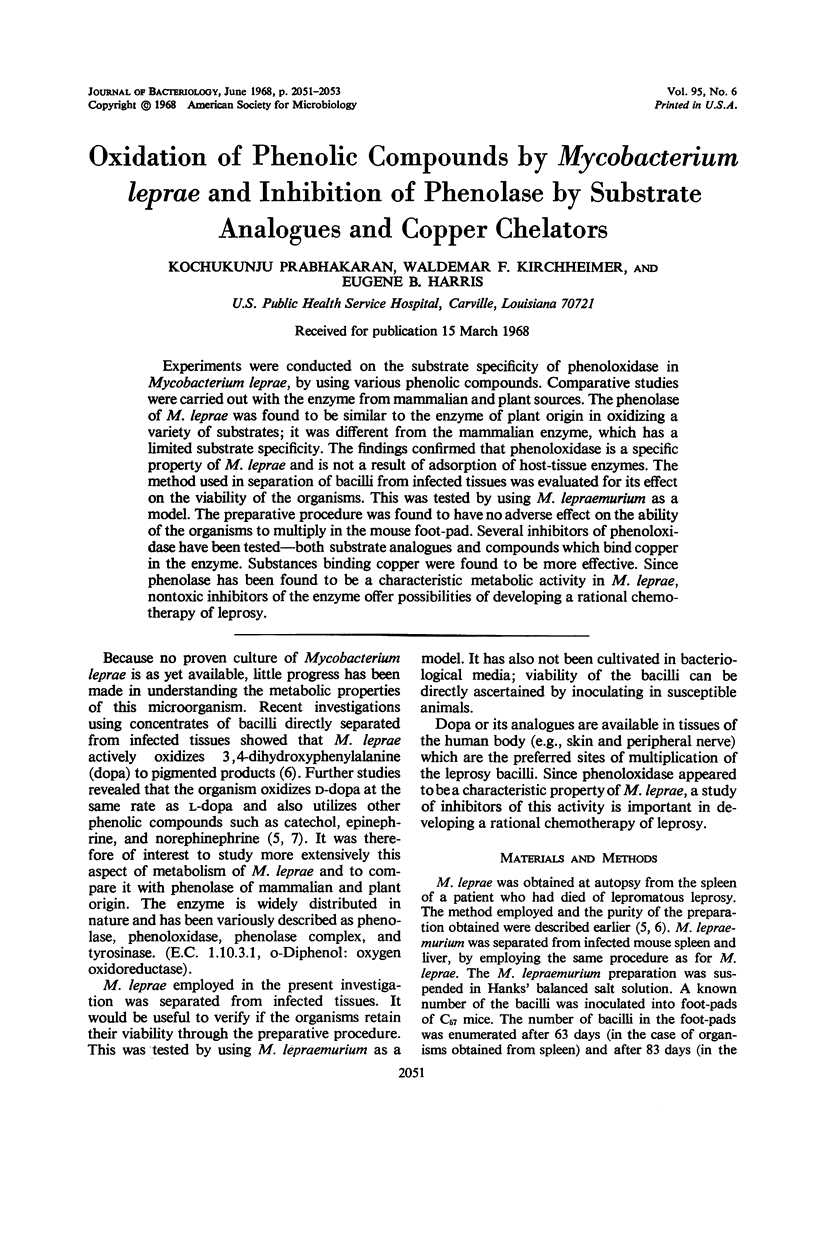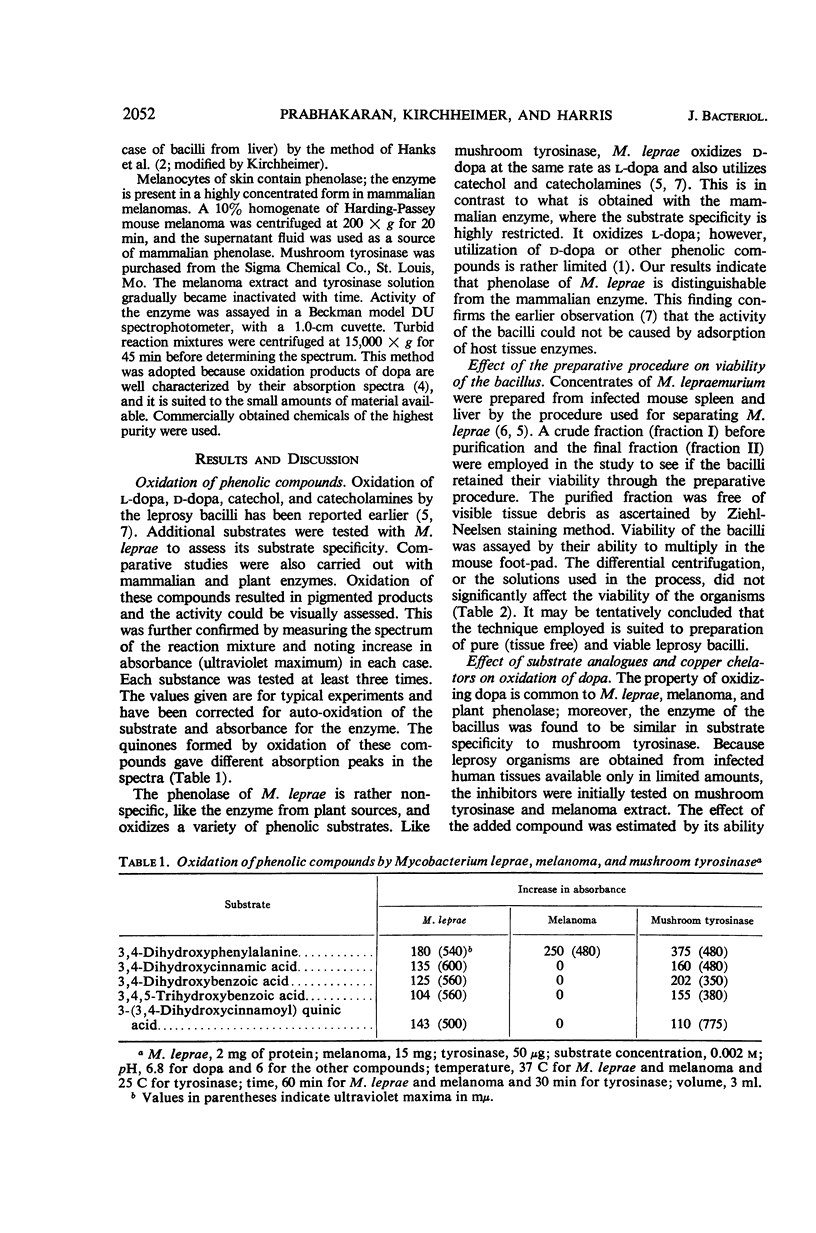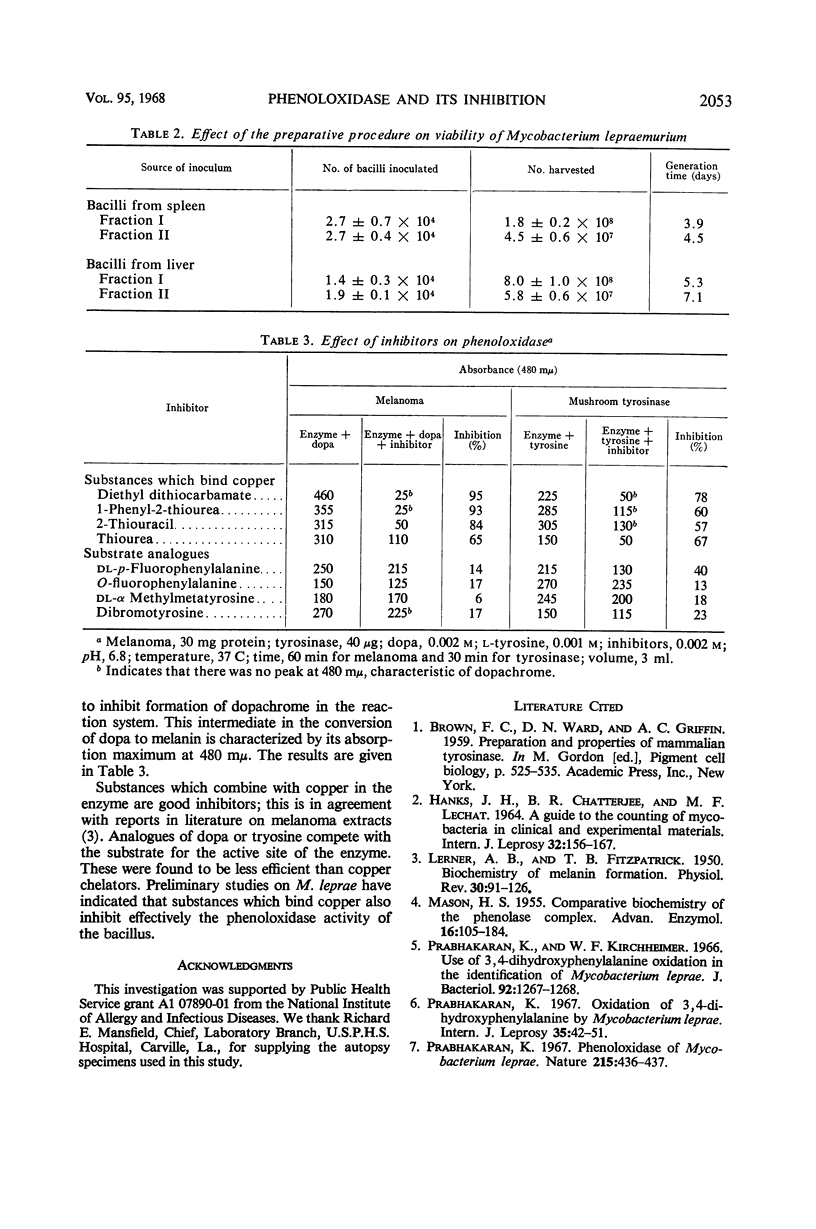Abstract
Experiments were conducted on the substrate specificity of phenoloxidase in Mycobacterium leprae, by using various phenolic compounds. Comparative studies were carried out with the enzyme from mammalian and plant sources. The phenolase of M. leprae was found to be similar to the enzyme of plant origin in oxidizing a variety of substrates; it was different from the mammalian enzyme, which has a limited substrate specificity. The findings confirmed that phenoloxidase is a specific property of M. leprae and is not a result of adsorption of host-tissue enzymes. The method used in separation of bacilli from infected tissues was evaluated for its effect on the viability of the organisms. This was tested by using M. lepraemurium as a model. The preparative procedure was found to have no adverse effect on the ability of the organisms to multiply in the mouse foot-pad. Several inhibitors of phenoloxidase have been tested—both substrate analogues and compounds which bind copper in the enzyme. Substances binding copper were found to be more effective. Since phenolase has been found to be a characteristic metabolic activity in M. leprae, nontoxic inhibitors of the enzyme offer possibilities of developing a rational chemotherapy of leprosy.
Full text
PDF


Selected References
These references are in PubMed. This may not be the complete list of references from this article.
- HANKS J. H., CHATTERJEE B. R., LECHAT M. F. A GUIDE TO THE COUNTING OF MYCOBACTERIA IN CLINICAL AND EXPERIMENTAL MATERIALS. Int J Lepr. 1964 Apr-Jun;32:156–167. [PubMed] [Google Scholar]
- LERNER A. B., FITZPATRICK T. B. Biochemistry of melanin formation. Physiol Rev. 1950 Jan;30(1):91–126. doi: 10.1152/physrev.1950.30.1.91. [DOI] [PubMed] [Google Scholar]
- MASON H. S. Comparative biochemistry of the phenolase complex. Adv Enzymol Relat Subj Biochem. 1955;16:105–184. doi: 10.1002/9780470122617.ch3. [DOI] [PubMed] [Google Scholar]
- Prabhakaran K., Kirchheimer W. F. Use of 3,4-Dihydroxyphenylalanine Oxidation in the Identification of Mycobacterium leprae. J Bacteriol. 1966 Oct;92(4):1267–1268. doi: 10.1128/jb.92.4.1267-1268.1966. [DOI] [PMC free article] [PubMed] [Google Scholar]
- Prabhakaran K. Oxidation of 3,4-dihydroxyphenylalanine (DOPA) by Mycobacterium leprae. Int J Lepr Other Mycobact Dis. 1967 Jan-Mar;35(1):42–51. [PubMed] [Google Scholar]
- Prabhakaran K. Phenoloxidase of Mycobacterium leprae. Nature. 1967 Jul 22;215(5099):436–437. doi: 10.1038/215436a0. [DOI] [PubMed] [Google Scholar]


